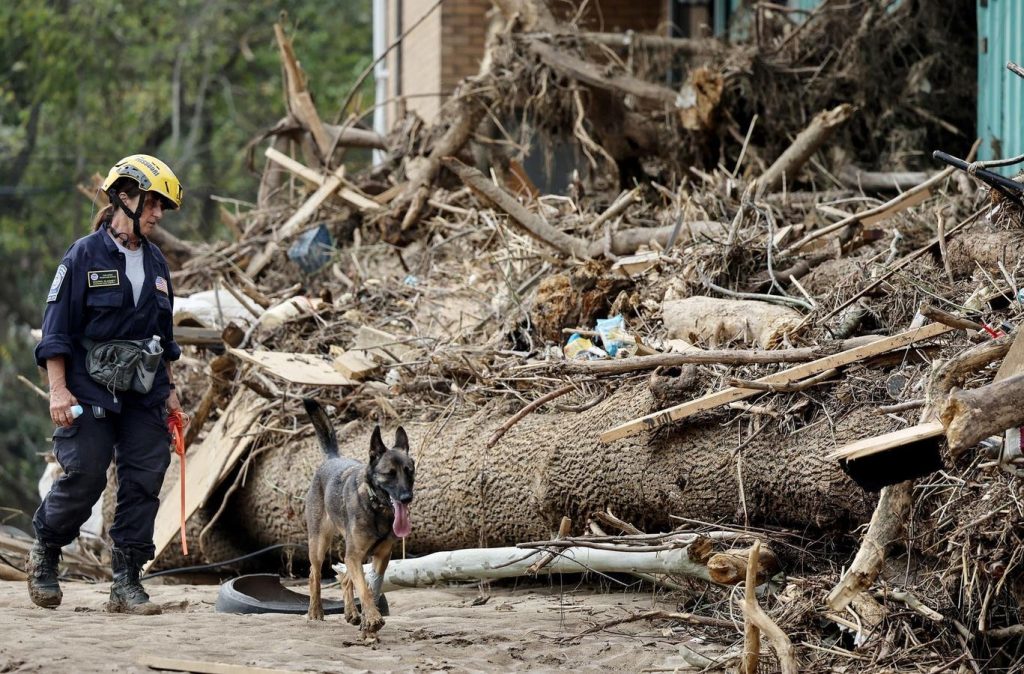Federal Emergency Management Agency crews weren’t able to do their jobs for much of this past weekend, and instead were forced to relocate following reports of armed threats made against workers. The Washington Post first reported that FEMA sent an email to numerous federal agencies over the weekend and called for all federal responders to “stand down and evacuate the county immediately.”
The decision was made after reports circulated that National Guard troops had encountered an armed militia that was reported to be “hunting FEMA.” Federal officials have confirmed the email’s authenticity, yet, there has been no confirmed confrontation with any armed militia involving the National Guard.
However, on Monday afternoon, one person was arrested in connection to the threat made in Rutherford County. William Parsons, 44, of Bostic, North Carolina, was arrested and charged with going armed to the terror of the public.
“The initial report stated there was a truck load of militia that was involved,” the Rutherford Sheriff’s Office said in a statement to CBS News. “However, after further investigation, it was determined Parsons acted alone and there were no truck loads of militia going to Lake Lure.”
A Wave Of Misinformation Online
The rumors of armed militias have spread on social media, and it followed the misinformation centered on FEMA’s response to Hurricane Helene. That has included claims that victims will only receive $750 in government aid but that properties will be seized. In addition, there have been repeated claims made that FEMA money had been diverted to immigrants.
“We have individuals in need of assistance who are entitled to assistance who aren’t seeking it because of the false information,” Homeland Secretary Alejandro Mayorkas said on Face the Nation with Margaret Brennan on Sunday.
The irony is that the misinformation circulating on social media has impacted recovery efforts.
“The amount of misinformation and disinformation we’ve seen around the recent hurricanes and help efforts is a strong example of how powerful those effects have become,” explained Dr. Cliff Lampe, professor of information and associate dean for academic affairs in the School of Information at the University of Michigan.
Misinformation began even before Hurricane Helene made landfall, with the dubious claims that government officials were controlling the weather and directing the storm to hit “red states.” The misinformation only intensified after the storm left a path of destruction.
“Over the last weeks we’ve seen death threats against meteorologists and now first responders in emergency situations,” said Lampe. “There are a few things that are challenging about this. One is that belief persistence, which is the effect where people tend to keep believing what they have believed, makes it so that new information often doesn’t make a difference in changing people’s minds. We tend to think that good information will swamp out bad information, but unfortunately, it’s not that simple.”
Social media can amplify such misinformation in a way that was previously impossible.
“We saw that a small group of people acting on misinformation can disrupt services of the majority of people with a need,” added Lampe.
“False information, especially on social media platforms, spreads incredibly fast. It’s crucial to distinguish between misinformation and disinformation,” said Rob Lalka, professor at Tulane University’s Freeman School of Business and author of The Venture Alchemists: How Big Tech Turned Profits Into Power.
“Misinformation refers to false, incomplete, or inaccurate information shared without harmful intent, while disinformation is deliberately false information designed to deceive,” Lalka continued.
The Wrong Call To Action
It doesn’t appear that the original reports of armed militias were true. However, even the one individual arrested highlights that we’ve now reached a point where words posted on social media and other platforms can rally some to take action—and not remotely in a helpful way.
While they very likely believe they are helping, there is a potential that it could disrupt FEMA services, which is a major outlet for help, warned Lampe.
“This shows the rapid evolution of misinformation,” he added. “We saw many of these issues arise in hours over the last week.”
One factor is that anyone with a mobile phone can now snap a picture and post it online, where the context can be lost or the image can be used to spread misinformation and even disinformation. At the same time, FEMA is looking to provide aid, not run a carefully coordinated PR campaign.
“Most government organizations at either the local or federal level do not have any types of resources available to help push out good information or challenges to disinformation in a way that matches that rate,” emphasized Lampe.
In other words, first responders aren’t snapping pictures of their work, as they’re working to respond to a disaster. Yet misinformation will almost certainly continue to circulate.
“New technologies are making it increasingly hard to tell what’s real and what’s fake,” said Lalka. “We now live in an era where Artificial Intelligence can generate lifelike images and audio, and these powerful tools should prompt us all to pause and consider whether a source is truly trustworthy.”
Read the full article here










